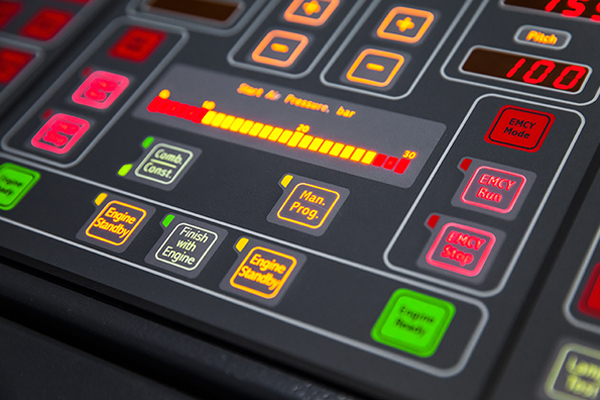
User Interfaces
High reliability user interfaces are defined as being more dependable than standard membrane switches as they incorporate additional components into a full assembly such as displays, switches, interface electronics, and graphics with aesthetics to match demanding OEM applications.
Samplings Of Our HMI Capabilities Include:
- Electronic Circuit Design: Analog circuits, digital circuits, mixed-signal circuits.
- Embedded Logic and Signal Processing Board Design: RISC microprocessors or controllers, ARMs, DSPs, and FPGAs.
- LCD & Touch Screen Integration: To ensure superior performance and excellent color quality and imaging in a broad range of indoor and outdoor operating environments.
- Electronic Circuit Simulation and Analysis: Analog or digital electronic circuit simulators, and mixed-signal electronic circuit simulators.
- Enclosure Design: Enclosures to satisfy the customer's unique application and environment may include machined, cast, metal, and molded.
- System Drivers: BSP for a variety of hardware boards, including development/porting of the device drivers for various peripherals such as serial and Ethernet communication, graphics display, and touch screen.
- Interface Hardware Development: Membrane switches, graphic overlays, rubber keypads, joysticks, pushbuttons, audio controls, visual signals, and many others.
- System BIOS: BIOS flash is a tool that allows customers to update and backup the BIOS on hardware platforms.
- Operating System: Windows Embedded 8/7/XP/CE, embedded Linux, and QNX embedded solutions are total BSP to help customers speed up their project development.
- Embedded Firmware: A wide range of embedded firmware solutions, no-OS environment, straight code-to-hardware, hardware architectures: 8-bit, custom (optimized) 32bit processors.
- Application Programming Interface: A set of routines, protocols, and tools to build software applications.
- Detailed Drawings and Documentation: Packages developed and maintained using a PLM system to pass FDA and FAA certifications and inspections.
- 3D CAD/CAM: Used for the rapid creation of parts, assemblies, and prototypes along with simulation and design validation toolsets.
- In-House Prototyping Including 3D Printing: Can quickly produce designs for testing and validating form, fit and function to accelerate the time to market for our customers.
- Highly Accelerated Life Test (HALT): Using HALT stress testing methodology to accelerate product reliability testing during the engineering development process; cold step/hot step/rapid temperature cycling/stepped vibration (random)/combined environment stress (temperature cycling and random vibration plus power switching and power margining.




